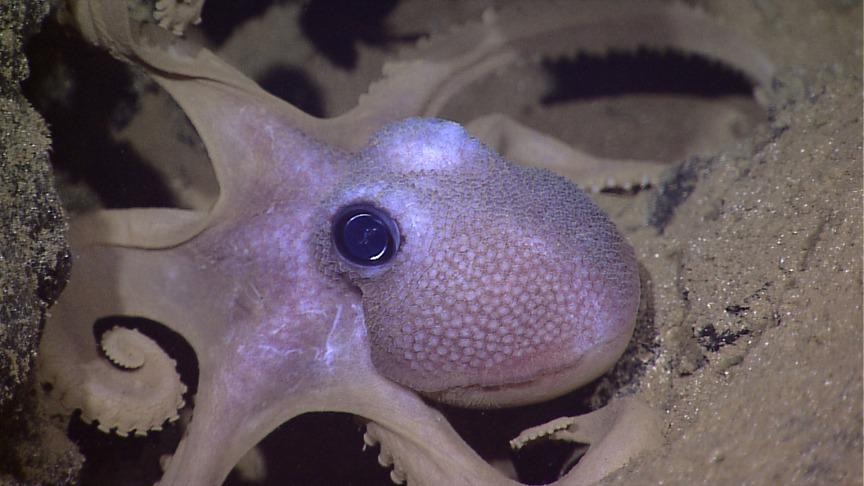Jan 6 2021
Engineers from Rutgers University took cues from the color-changing skin of squids, octopuses and cuttlefish to develop a 3D-printed smart gel that alters its shape upon exposure to light, turns into an 'artificial muscle,' and may pave the way for new military camouflage, flexible displays and soft robotics.
 This octopus has color-changing cells, called chromatophores, in its skin, a phenomenon that inspired Rutgers engineers. Image Credit: NOAA Okeanos Explorer Program, Galapagos Rift Expedition 2011.
This octopus has color-changing cells, called chromatophores, in its skin, a phenomenon that inspired Rutgers engineers. Image Credit: NOAA Okeanos Explorer Program, Galapagos Rift Expedition 2011.
Additionally, the team has designed a 3D-printed stretchy material that can disclose colors upon changes in light, reports their study published in the ACS Applied Materials & Interfaces journal.
The new invention has been modeled following the incredible potential of cephalopods like squids, octopuses and cuttlefish to change the texture and color of their soft skin for the purposes of camouflage and communication. This is realized through the thousands of color-changing cells, known as chromatophores, present in their skin.
"Electronic displays are everywhere and despite remarkable advances, such as becoming thinner, larger and brighter, they’re based on rigid materials, limiting the shapes they can take and how they interface with 3D surfaces. Our research supports a new engineering approach featuring camouflage that can be added to soft materials and create flexible, colorful displays."
Howon Lee, Study Senior Author and Assistant Professor, Department of Mechanical and Aerospace Engineering, School of Engineering, Rutgers University-New Brunswick
Engineers from Rutgers University have created a 3D printable hydrogel, or smart gel, with the ability to sense light and thus change its shape. Hydrogels that maintain their shape and remain solid despite containing water have been discovered in the human body, contact lenses, diapers and Jell-O, apart from several other examples.
The team combined a light-sensing nanomaterial with the hydrogel and thus made it into an 'artificial muscle' that can contract in reaction to variations in light. The light-sensing smart gel, integrated with the 3D-printed stretchy material, changes color, leading to a camouflage effect.
The next stages in the study are to enhance the technology’s durability, packaging, scalability, sensitivity and response time.
The lead authors of the study include Daehoon Han, who earned a doctorate at Rutgers and is currently a postdoctoral associate at the University of Minnesota and Yueping Wang, a Rutgers doctoral student.
Chen Yang, a doctoral student from Rutgers, also contributed to the study. This study was financially supported by a Rutgers University Research Council Grant and the National Science Foundation.
Journal Reference:
Han, D., et al. (2021) Multimaterial Printing for Cephalopod-Inspired Light-Responsive Artificial Chromatophores. ACS Applied Materials & Interfaces. doi.org/10.1021/acsami.0c17623.